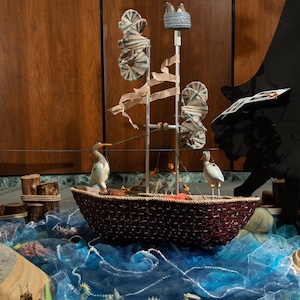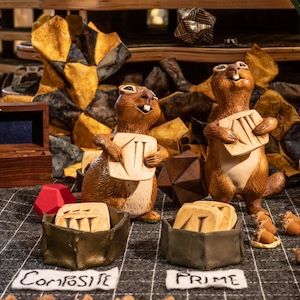
Composite gallery debut and presentation:
“Mathemalchemy:
an adventure in math and art”
featuring Ingrid Daubechies
Wednesday, May 22
6:30 pm to 8:00 pm
(in person)



A room-sized artistic playground for math lovers, the Mathemalchemy art installation opens in Composite on Fifth on Wednesday, May 22! Be one of the first to witness its debut at MoMath and to hear the story of its making from one of the initiators.
Designed and fabricated during the pandemic by a team of 24 mathematical artists and artistic mathematicians, Mathemalchemy celebrates the fun, beauty, and creativity of mathematics. It depicts a magical wonderland where critters of all stripes are surrounded by mathematical objects and observe customs interwoven with mathematics. This landscape creatively illustrates many different subfields of mathematics at many different levels.
Join Distinguished Visiting Professor Ingrid Daubechies and several of the artists and mathematicians involved in its creation as we walk around the art installation, examining its many components and hearing about some of the mathematical concepts embedded in this fascinating and unique artwork.